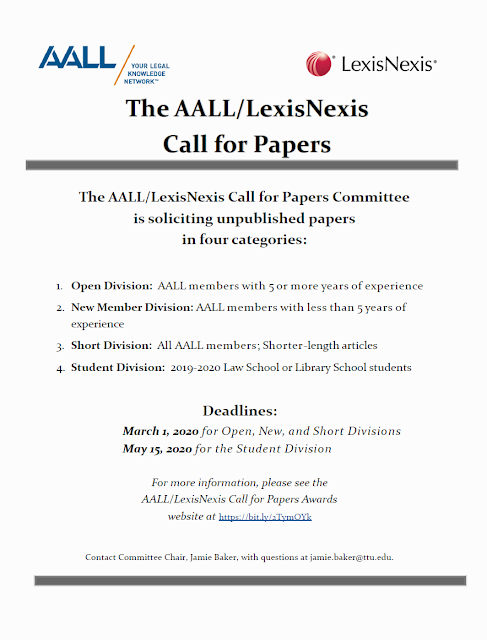Can Robots Be Lawyers? Not So Fast.
The NYTimes Bits Blog highlighted an interesting new study on automation and lawyering.
As the article noted, the fate of lawyers has been seen as a harbinger of a broader wave of worker displacement. The rapid commercialization of a new generation of artificial intelligence-derived technologies has led to concerns that technological disruption will extend from white- and blue-collar occupations of largely routine work that can be automated, into highly-paid professions like legal workers and doctors.
This has mostly been anecdotal speculation (really since the 1950's, but who's counting?). Until now, that is, when we finally have some reputable research to work from. In November, for example, a study prepared by McKinsey & Company suggested that adding technology to the workplace is more likely to transform, rather than eliminate, jobs. This echoed a growing consensus that it is important to distinguish “task” automation from “job” automation. The McKinsey study found that less than 5 percent of jobs can be completely automated based on existing technologies within the next three to five years.
Even more striking is a similar study by James Bessen, a Boston University School of Law researcher, who found a positive relationship between the degree of computerization in a particular job category and employment growth.
What we're actually seeing is that automation will, no doubt, change our work, but it won't eliminate it. In fact, David Autor, an M.I.T. labor economist, predicted that in the future, while A.I. technologies would continue to replace routinized jobs, they would also increase the number of workers whose jobs require problem-solving, flexibility and creativity.
And we have even more concrete evidence in a new study, “Can Robots Be Lawyers?”, a draft of which was posted last week on the Social Science Research Network by Dana Remus, a professor at the University of North Carolina School of Law, and Frank S. Levy, an M.I.T. labor economist. In the study, they explored which aspects of a lawyer’s job could be automated.
The research suggested that, for now, even the most advanced A.I. technology would at best make only modest inroads into the legal profession. The researchers noted that many of the tasks that lawyers perform fall well within what [has been] defined as human behavior that cannot be easily codified. “When a task is less structured, as many tasks are,” the researchers wrote, “it will often be impossible to anticipate all possible contingencies.”
In an analysis of actual legal work practices from billing invoice data, the researchers estimated that about 13 percent of all legal work might ultimately fall prey to automation.
When it comes to law librarians, like lawyers, our tasks are extremely unstructured. There are many contingencies to legal research and connections must be made that require the type of creative analysis that cannot be codified.
There is hope for the future! At least within the next 3-5 years, anyway.
As the article noted, the fate of lawyers has been seen as a harbinger of a broader wave of worker displacement. The rapid commercialization of a new generation of artificial intelligence-derived technologies has led to concerns that technological disruption will extend from white- and blue-collar occupations of largely routine work that can be automated, into highly-paid professions like legal workers and doctors.
This has mostly been anecdotal speculation (really since the 1950's, but who's counting?). Until now, that is, when we finally have some reputable research to work from. In November, for example, a study prepared by McKinsey & Company suggested that adding technology to the workplace is more likely to transform, rather than eliminate, jobs. This echoed a growing consensus that it is important to distinguish “task” automation from “job” automation. The McKinsey study found that less than 5 percent of jobs can be completely automated based on existing technologies within the next three to five years.
Even more striking is a similar study by James Bessen, a Boston University School of Law researcher, who found a positive relationship between the degree of computerization in a particular job category and employment growth.
What we're actually seeing is that automation will, no doubt, change our work, but it won't eliminate it. In fact, David Autor, an M.I.T. labor economist, predicted that in the future, while A.I. technologies would continue to replace routinized jobs, they would also increase the number of workers whose jobs require problem-solving, flexibility and creativity.
And we have even more concrete evidence in a new study, “Can Robots Be Lawyers?”, a draft of which was posted last week on the Social Science Research Network by Dana Remus, a professor at the University of North Carolina School of Law, and Frank S. Levy, an M.I.T. labor economist. In the study, they explored which aspects of a lawyer’s job could be automated.
The research suggested that, for now, even the most advanced A.I. technology would at best make only modest inroads into the legal profession. The researchers noted that many of the tasks that lawyers perform fall well within what [has been] defined as human behavior that cannot be easily codified. “When a task is less structured, as many tasks are,” the researchers wrote, “it will often be impossible to anticipate all possible contingencies.”
In an analysis of actual legal work practices from billing invoice data, the researchers estimated that about 13 percent of all legal work might ultimately fall prey to automation.
When it comes to law librarians, like lawyers, our tasks are extremely unstructured. There are many contingencies to legal research and connections must be made that require the type of creative analysis that cannot be codified.
There is hope for the future! At least within the next 3-5 years, anyway.


Comments
Post a Comment